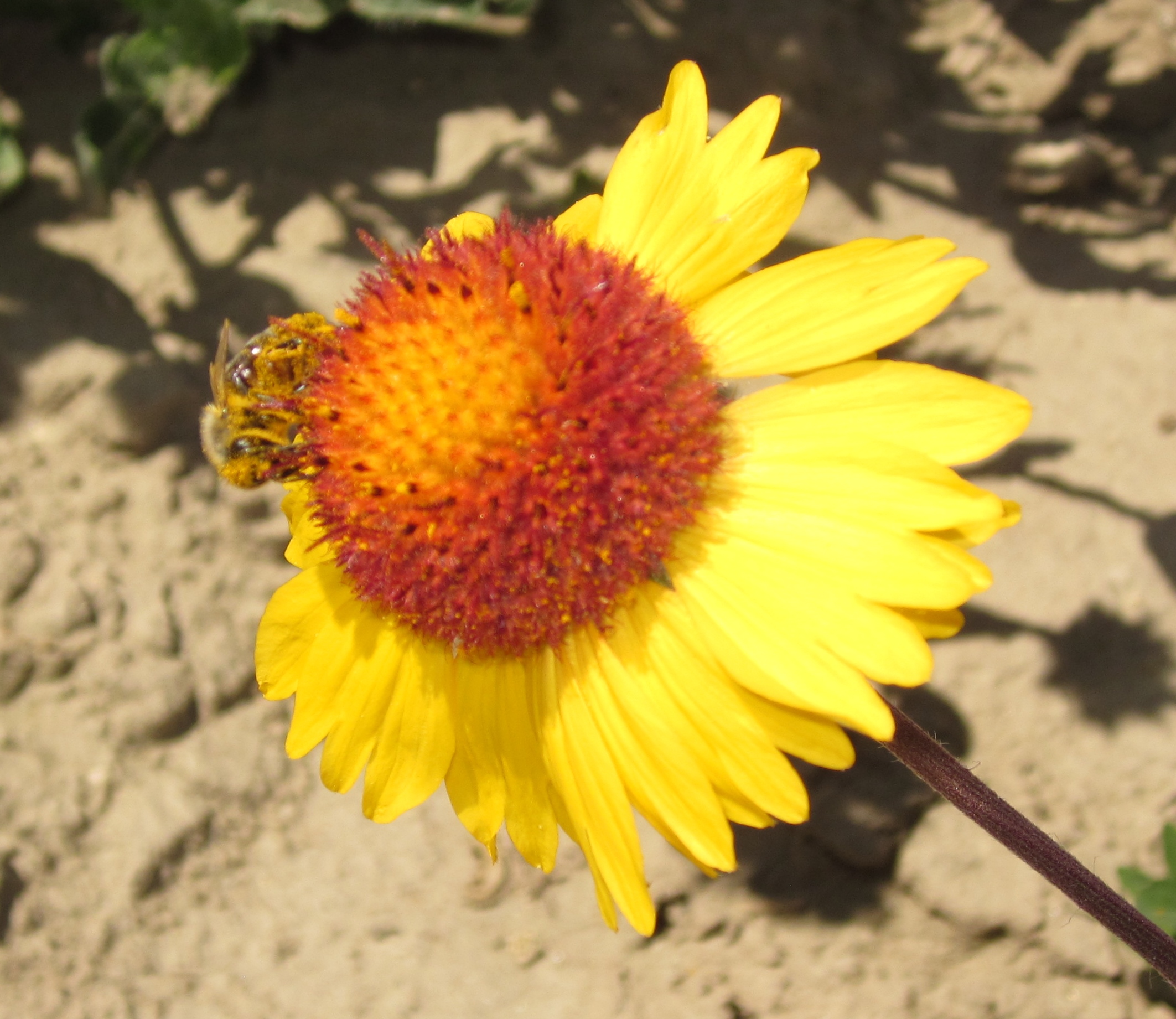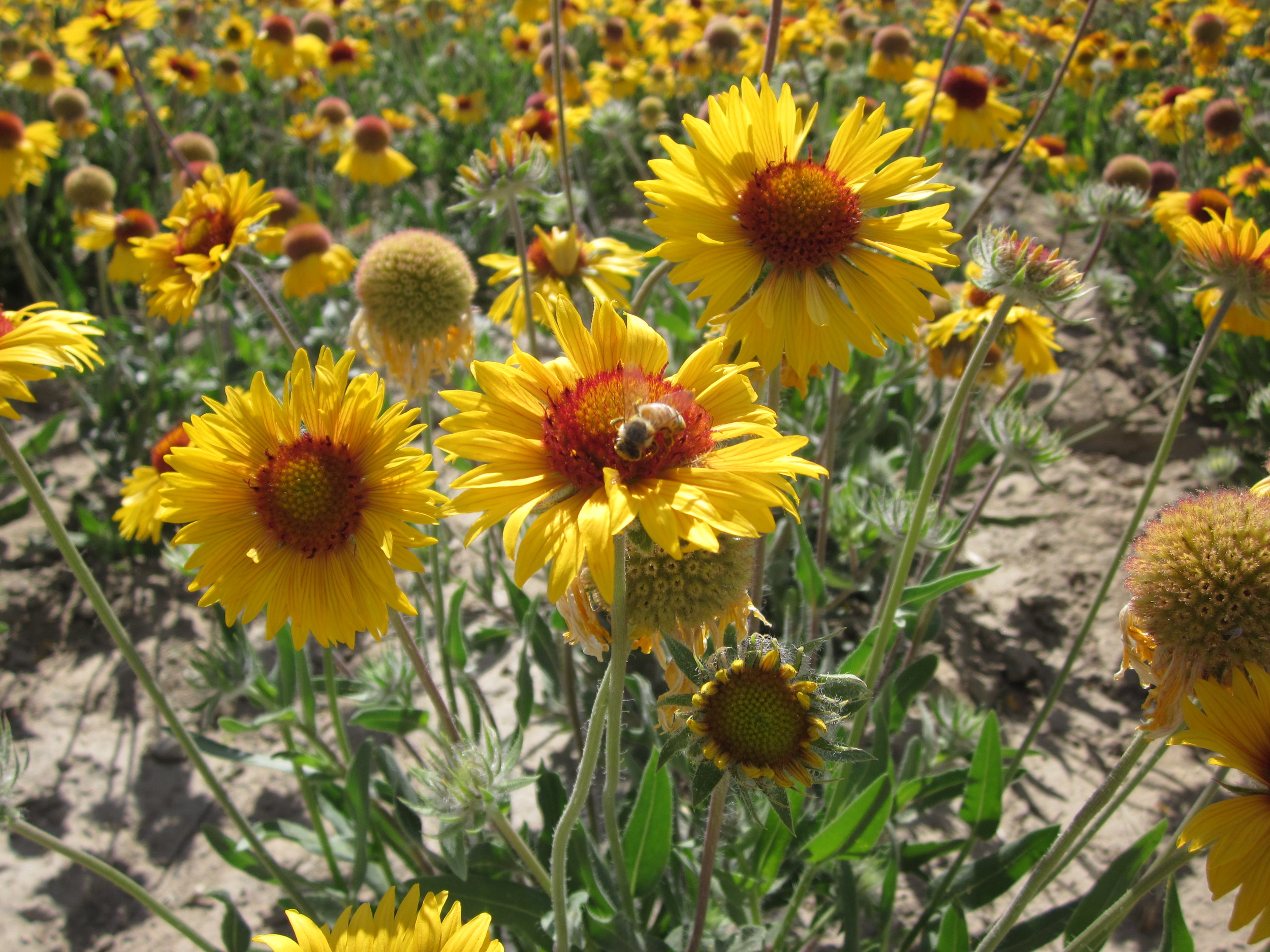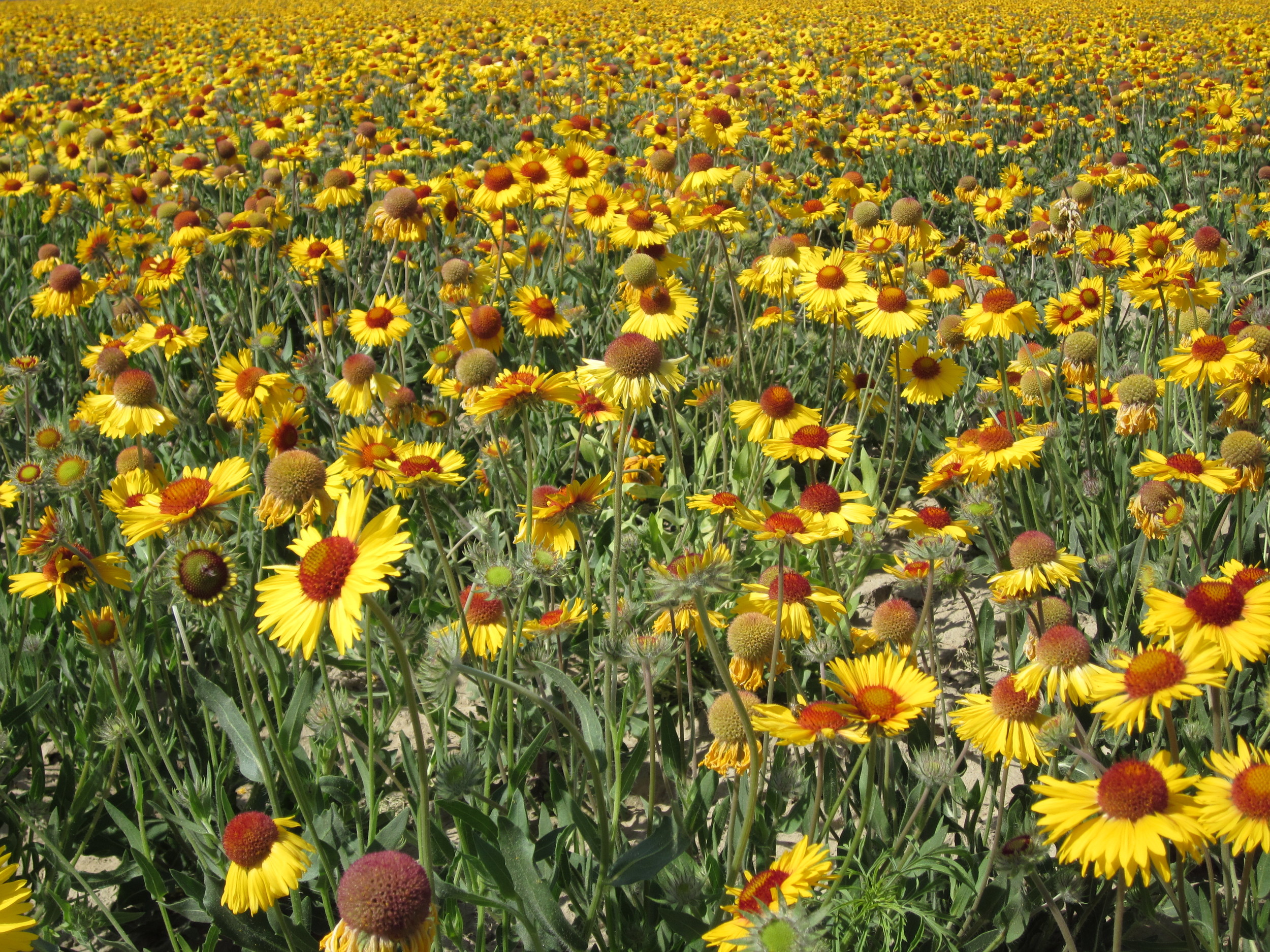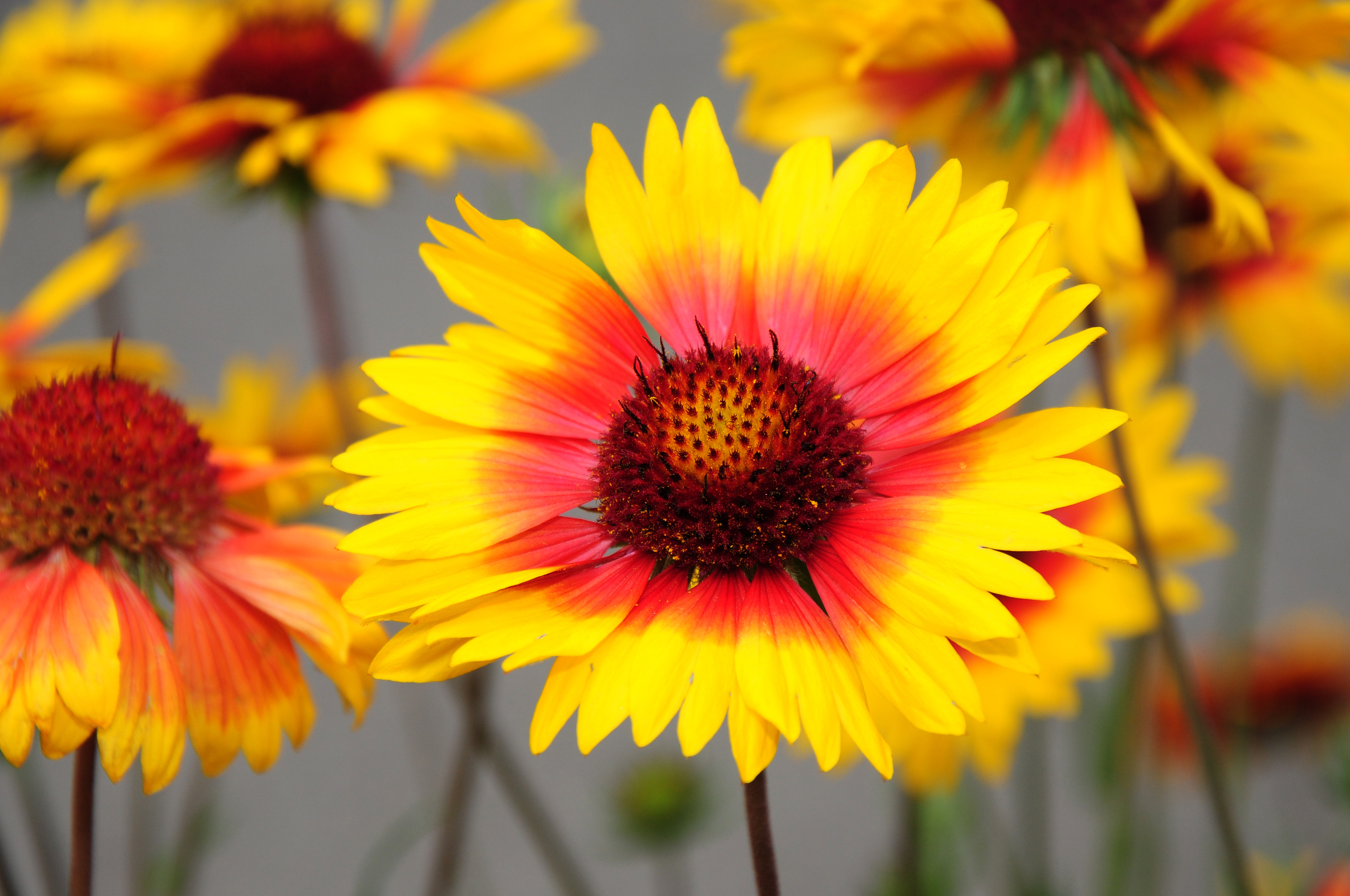Gaillardia aristata (Blanketflower)
Widely adapted, drought tolerant native perennial with yellow and red flowers, blooming April to September. Found in a variety of well-drained soils in grasslands, shrublands, open woodlands and mountain meadows; up to 10,000 ft. elevation. Tolerant of mild acidic to mild alkaline conditions. Establishes quickly and able to grow into large colonies, especially on disturbed sites. Fire resistant, increasing after wildfire. Competitive with weeds. Attracts numerous pollinating bees and butterflies; extensive bloom period. Foliage and associated insects are a food source for sage-grouse and sharp-tail grouse. Use in restoration, erosion control or beautification. Varieties listed below.
DISTRIBUTION / ADAPTATION
INFORMATION & ATTRIBUTES
Family: Asteraceae
Duration: Perennial
Growth Habit: Forb/herb
Native Status: Native
Growth Form: Bunch
Mature Height: 12-24 in.
Bloom Color: Yellow/Red or Yellow
Bloom Period: June-September
Annual Precipitation: 16-30 in.
Drought Tolerance: Medium
Shade Tolerance: Shade
Elevation:
Fire Resistance: No
Fire Tolerance: Low
Nitrogen fixation: No
SOIL ADAPTATION
Coarse Texture: Yes
Medium Texture: Yes
Fine Texture: No
Salinity Tolerance: Low
CaCO3 Tolerance: Medium
pH Range: 5.5-7.9
SEEDING NOTES
Seeds per Pound: 186,00
Seeding Rate: 0.25-2.0 PLS lbs/acre
Season: Spring/Fall
Days to Germination:
VARIETIES & LOCAL ACCESSIONS
Meriwether - First true North American native release. Ray petals are solid yellow without red interiors, differing from some commonly known types. Use in habitat restoration, site reclamation or as an ornamental in low maintenance landscaping. (Released 2011)






